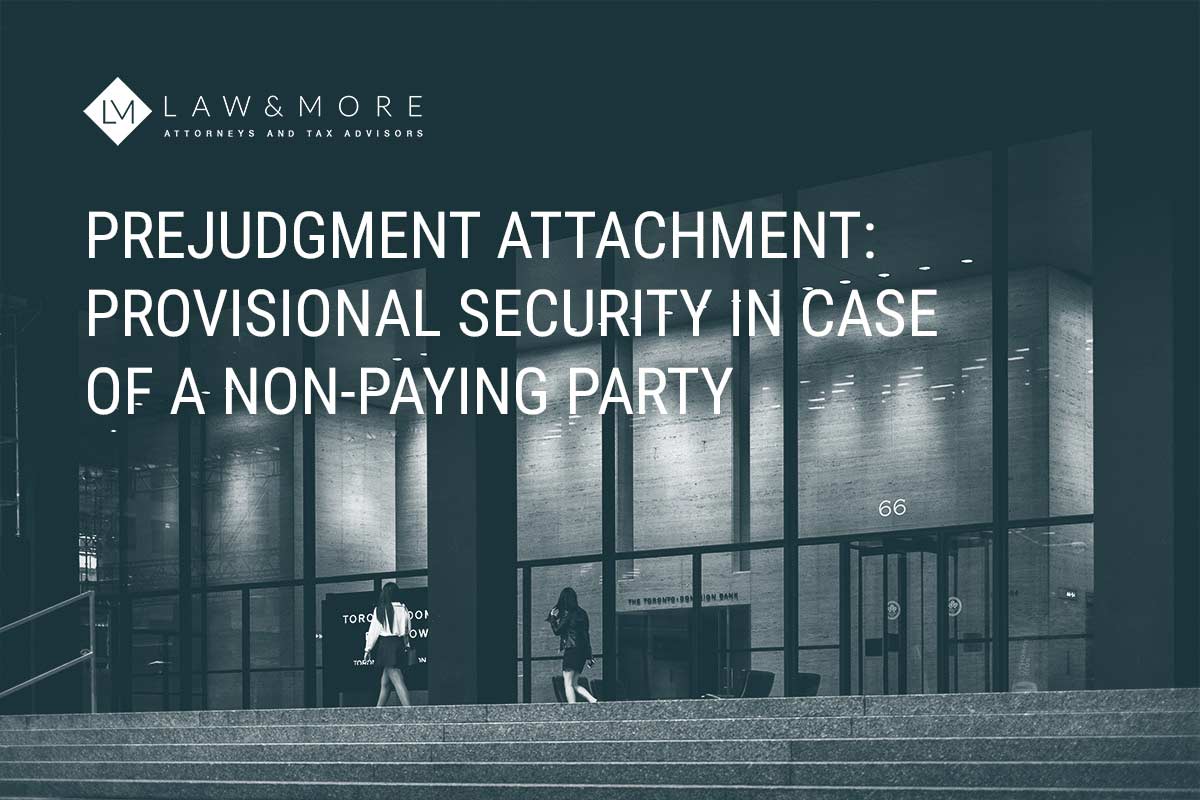Prejudgment attachment: provisional security in case of a non-paying party
Prejudgment attachment can be seen as a preservative, temporary form of attachment. Prejudgment attachment can serve to ensure that the debtor does not get rid of his goods before the creditor can seek actual redress through seizure under a writ of execution, for which a judge must grant a writ of execution. Contrary to what is often thought, prejudgment attachment namely does not lead to immediate satisfaction of the claim.
Prejudgment attachment is a widely used tool, which can also be used as leverage to make the debtor budge and get him to pay. Compared to other countries, attachment of goods in the Netherlands is quite simple. How can goods be attached through prejudgment attachment and what are the implications?

Prejudgment attachment
When one wants to seize goods through prejudgment attachment, one will have to submit an application to the preliminary relief judge. This application will have to meet certain requirements. The application must for instance contain the nature of the desired attachment, information on which right is invoked (for example ownership or the right to compensation for damage) and the amount for which the creditor wishes to seize the goods of the debtor.
When the judge decides on the application, he does not conduct an extensive research. The research done is brief. However, a request for prejudgment attachment will only be approved when it can be shown that there is a well-founded fear that a debtor, or a third party to which the goods belong, will get rid of the goods. Partly for this reason, the debtor is not informed on the request for prejudgment attachment; the seizure will come as a surprise.
At the moment the application is approved, the main proceedings relating to the claim to which the prejudgment attachment corresponds will have to be initiated within a period set by a judge, which is at least 8 days from the moment of approval of the prejudgment attachment application. Normally, the judge will set this term to 14 days. The attachment is announced to the debtor through a notice of attachment served on him by the bailiff.
Normally, the attachment will remain in full force until a writ of execution is obtained. When this writ is obtained, the prejudgment attachment is converted into seizure under a writ of execution and the creditor can lay claim to the attached goods of the debtor. When the judge refuses to grant a writ of execution, the prejudgment attachment will expire. Noteworthy is the fact that prejudgment attachment does not mean that the debtor cannot sell the attached goods. This does mean that the attachment will remain on the goods if sold.
Which goods can be seized?
All assets of the debtor can be attached. This means that attachment can take place with respect to inventory, wages (earnings), bank accounts, houses, cars, etc. Attachment of earnings is a form of garnishment. This means that goods (in this case the earnings) are held by a third party (the employer).
Cancellation of the attachment
Prejudgment attachment on goods of the debtor can also be cancelled. Firstly, this can happen if the court in the main proceedings decides that the attachment should be cancelled. An interested party (usually the debtor) can also request cancellation of the attachment. Reason for this may be that the debtor provides alternative security, that it appears from summary examination that the attachment is unnecessary or that there has been a procedural, formal error.
Disadvantages of prejudgment attachment
Despite the fact that prejudgment attachment seems like a nice option, one will also have to take into account the fact that there can be consequences when one request prejudgment attachment too lightly. At the moment the claim in the main proceedings to which the prejudgment corresponds is rejected, the creditor that has lodged an order for attachment will be liable for the damage suffered by the debtor.
Moreover, prejudgment attachment proceedings cost money (think of bailiff fees, court fees and attorney fees), not all of which will be reimbursed by the debtor. In addition, the creditor always carries the risk of there not being anything to claim, for instance because there is a mortgage on the attached property which exceeds its value and has priority upon execution or – in case of attachment of a bank account – because there is no money on the debtor’s bank account.
Contact
Should you have any further questions or comments after reading this article, feel free to contact mr. Ruby van Kersbergen, attorney-at-law at Law & More via [email protected] or mr. Tom Meevis, attorney-at-law at Law & More via [email protected] or call us on +31 (0)40-3690680.
